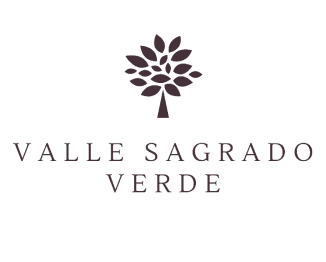The White City
The White City Sucre is renowned for being one of South America’s most impressive colonial cities, making it the perfect
starting point for Tours in Bolivia. The city has some of the best Spanish colonial architecture in South America. A number
of restaurants, cafes, and hotels reside within these centuries-old edifices, which are as charming as they are historic.
White-walled buildings, elegant balconies, leafy patios, and bright terracotta rooftops with imposing steeples
dominate the city center, creating an old-world charm that is unlike any other.
Sucre has a youthful population due to its many large and prestigious universities. As a result, the nightlife is buzzing from
Thursday to Saturday, most of which is based within the city’s colonial center.
Discover Sucre
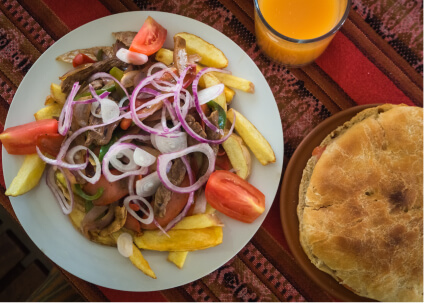
GASTRONOMY1 / 4
With international influences from all over the world, Sucre’s food scene is a mix of Bolivian and indigenous cuisine, mixed with European flairs. Sucre is a great city to try a variety of Bolivian specialties including chorizo, salteñas, pique macho or Andean stirfry, and fricasé - a spicy pork or chicken soup that is popular in the highlands. The most famous dish from Sucre, mondongo is a spicy pork stew accompanied by ground locoto, garlic and peppers, served on top of a generous portion of choclo. Much like fricasé, mondongo is a popular weekend option as it is said to provide relief from a lengthy drinking session.
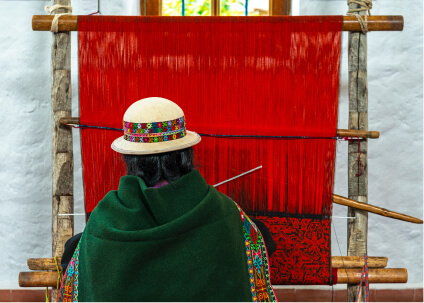
CULTURE2 / 4
Sucre is a UNESCO World Cultural Heritage Site, because of its colonial history, very present in the architecture of the historic center of the city. The city is recognized for the integration of Spanish and European culture with the pre-Hispanic indigenous one. Sucre lies on the frontier between the Highland with Aymara and Quechua culture and the lowland of Guarani indigenous people. Because of this, you can experience in the streets of Sucre all kinds of cultural expressions, visible in the clothing, handicrafts, and food products, all part of daily life. Visit and admire traditional indigenous weaving in the villages and communities around Sucre or in the museums and shops in the city.
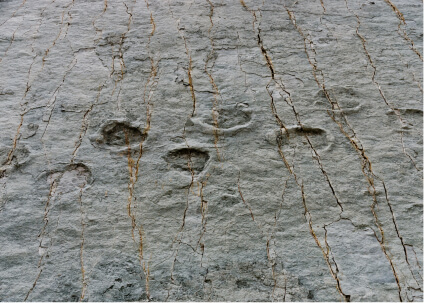
NATURE3 / 4
The mountainous landscape offers a variety of tours on foot, bicycle, or motorized, from light to heavy. You can visit several places with dinosaur tracks, including the world’s largest collection, rock paintings, a forest, a meteorite crater, and National Park El Palmar, among others. The Altiplano area where Sucre is located in the Andes is geographically advantaged with a series of rugged north–south mountain ranges, scarred with long narrow valleys formed by rivers draining to the east. Blessed with rich alluvial soils, and midway in climate and altitude between the cold of the Altiplano and the tropical heat of the lowlands, these central valleys have historically been among the most fertile and habitable areas in Bolivia, and offer visitors lush landscapes to enjoy during their stay.
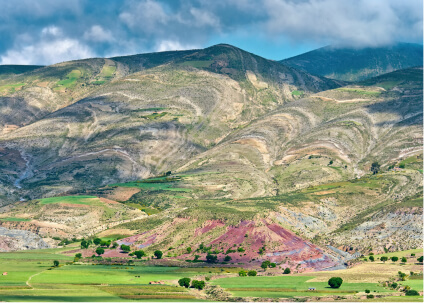
ADVENTURE4 / 4
There are several trekking paths around Bolivia’s capital city. You can set your foot on the road to Las Siete Cascadas, The Seven Waterfalls, or head to the two to three days trek to Maragua crater. Sucre also has a surprising number of places for going climbing and, whatever your level and previous experience, the mountains surrounding Sucre offer a range of walls to try – all with spectacular views. Try climbing the intermediate level walls of Sica-Sica, or trekking the nearby Cerro Churuquella for an adventure that won’t take all day, but will still get your heart rate up with some spectacular views of the area.
BROWSE THROUGH SAMPLE
Signature Bolivia Itineraries
Our custom-designed itineraries are suited to the needs and
preferences of each traveler, every time.
When booking a vacation to Bolivia, we’ll keep your travel goals in mind. Whether you’re looking to experience the art
and culture of La Paz, experience the salt flats of Salar De Uyuni, or enjoy lake life in Lake Titicaca- Bolivia has
something for everyone and our travel designers are eager to craft the perfect trip for your luxury tour of Bolivia.
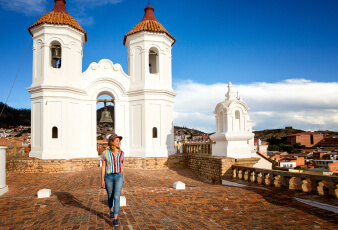
LUXURY BOLIVIA TRIP
13D / 12N
Set off on a luxury trip to Bolivia for two weeks of history, culture, and adventure. Explore the highlights of cities teeming with life from…
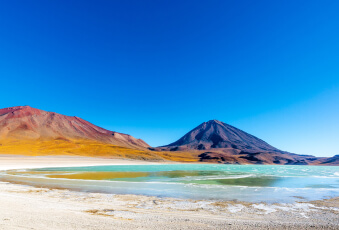
JOURNEY TO THE UYUNI SALT FLATS
7D / 6N
Set off on a luxury trip to Bolivia to stand in the presence of the awe-inspiring Uyuni Salt Flats. Explore strange and stunning…
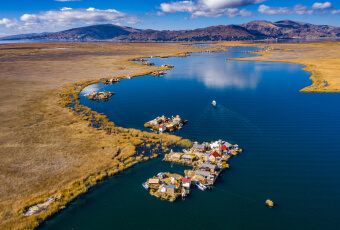
LA PAZ & THE ISLAND OF TITICACA
5D / 4N
Uncover one of the most unique cultures in South America with a trip to the world’s highest navigable lake. This luxury trip to…
DISCOVER THE
Best Time To Travel
Sucre can be found in the central mountainous area of Bolivia.
In this region, visitors will find mild temperatures throughout most of the year. September – November, or springtime, is
the best time in Sucre, with the most temperate weather and the least crowds.
BEST MONTHS TO VISIT
Insider Tips
GET THE INSIDER KNOWLEDGE FROM EXPERTS IN TRAVEL
With travel experts who have explored Bolivia, the Kuoda team knows the ins
and outs of the country and the best way to experience it.
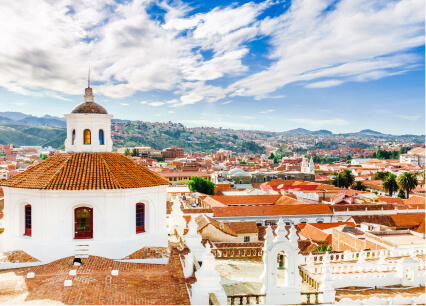
WHAT TO SEE AND DO1 / 4
Enjoy the stunning architecture A plethora of churches, cathedrals, and monasteries decorate Sucre and make for the perfect opportunity to wander around and explore within the Sucre city center. Ornately decorated buildings such as the Santa Clara Convent, Convent of San Felipe Neri, Iglesia La Merced give visitors an inside look into the Spanish colonial era of Sucre. The Castillo de la Glorieta of Bolivia’s only ever Prince & Princess This pink castle is an architectural masterpiece waiting to be discovered. Now serving as a museum, the castle provides a fascinating insight into a quirky slice of Bolivian history.
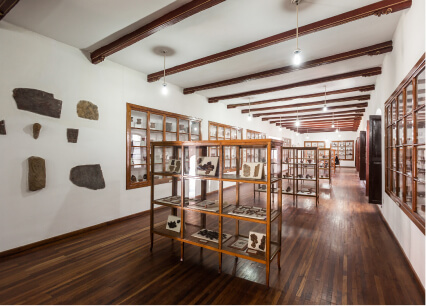
WHAT TO SEE AND DO2 / 4
Visit one of the city’s museums As the site of Bolivia’s declaration of independence, as well as indigenous settlements that date back millennia, there’s a great deal of history behind Bolivia‘s official capital city. Learn more about the history of Sucre by visiting one of the city’s many museums, which cover a wide range of themes such as religious art, gemstones, ethnography, indigenous art, and folklore.
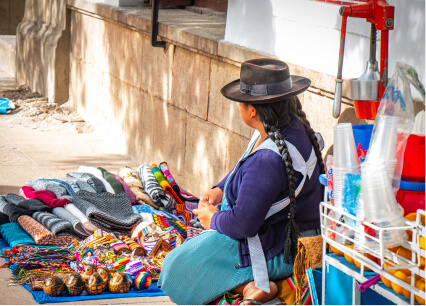
WHAT TO SEE AND DO3 / 4
Explore Sucre’s markets Those visiting the majestic ‘White City’ of Sucre should take time to peruse its colorful and vibrant markets. Whether it's the farmer’s market to buy fresh fruit or the crafts market to buy souvenirs or fashion - Sucre has a variety of markets that give visitors the opportunity to browse around and bring something home. Sucre’s biggest and most bustling market is worth the short trip from the city center. Spanning around 10 blocks near the stadium, sprawling Mercado Campesino has almost anything imaginable up for sale somewhere within its perimeter. Other markets include Mercado Central for street food or Mercado Negro for traditional Bolivian designs.
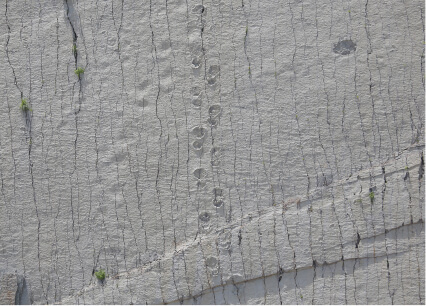
WHAT TO SEE AND DO4 / 4
Learn about dinosaurs Sucre is a great spot to see some well-preserved dinosaur footprints and learn more about these prehistoric behemoths. Parque Cretácico (Cretaceous Park) is the place for history enthusiasts and budding archaeologists, with a number of footprints on display, an informative museum, and some fun life-size fiberglass models for the kids, or the young at heart.
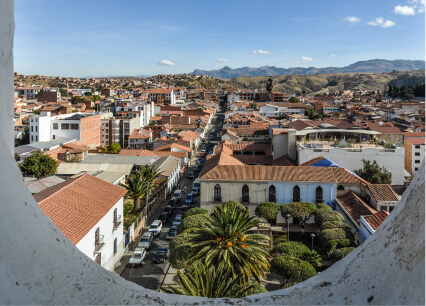
WHERE TO EAT1 / 3
Café Mirador With some of the most sweeping views of Sucre to be found in the city, Café Mirador offers a superb panorama of the white-washed buildings and terracotta roofs that are a hallmark of this marvelous city. With a Bolivian and international-inspired menu, Café Mirador serves up a diverse selection of traditional Bolivian dishes like salteñas or chorizo with an international flair as well as a selection of pizzas, pastas and more. The restaurant is known by visitors and locals alike for being the best place in town for a relaxing sunset drink.
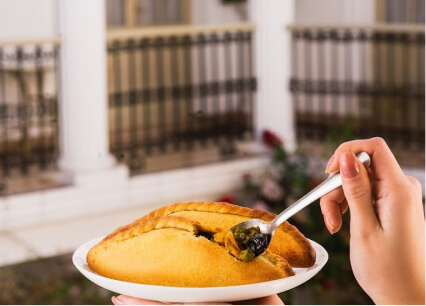
WHERE TO EAT2 / 3
El Patio This charming colonial patio is famous for serving the best salteñas (much like empanadas) in Sucre, if not the country. It’s so popular that lines can start forming early in the morning and not begin to dissipate until it completely sells out after midday. Those with the patience to wait for this delightful morning treat will not be disappointed. With a bit of luck, there might even be a spare seat in the leafy central courtyard.
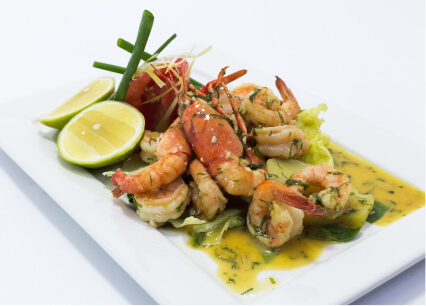
WHERE TO EAT3 / 3
La Taverne A steak and a glass of wine? Yes, please. La Taverne is a French-inspired Bolivian restaurant known in the city for its incredible steaks. The steaks are easily the best thing on the menu. Here, they cook it properly with your choice of Bolivian and international sauces. One of the most popular restaurants in Sucre with a cozy, romantic atmosphere and stunning courtyard seating, this is one of the city’s more upscale options and is perfect for getting dressed up and enjoying the culinary delights of the city of Sucre.
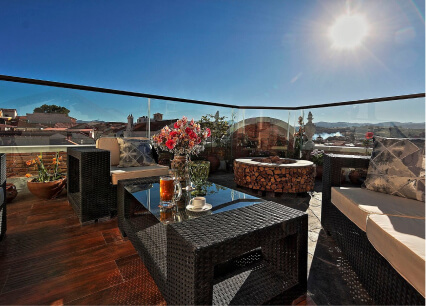
WHERE TO STAY1 / 3
On Boutique Hotel Situated in the heart of Sucre, On Boutique provides visitors with comfortable, large rooms that feel expertly designed. Glossy, freestanding baths in the open-plan bedrooms with trendy metro-style tiles contrast cleverly with the exposed beams and wooden floors. Start the day with a cooked-to-order breakfast on the sun-soaked roof terrace, where views over the rooftops or across the mountains will put you in the exploring mood.
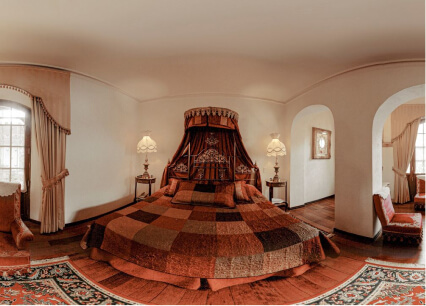
WHERE TO STAY2 / 3
Parador Santa Maria Real This refined colonial hotel close to the main plaza was once a stately home and stables. In the present day, it has retained much of the 18th-century charm, with warm wooden floors, antiques, and an arcaded courtyard. Décor-wise, expect period furniture and fittings, thick red drapes with gilt tassels, and canopied brass beds. The hotel’s superior master suite provides room for the whole family and is equipped with heated floors and a hot tub. Dine by candlelight in the hotel’s intimate Watanay – a series of atmospheric underground chambers.
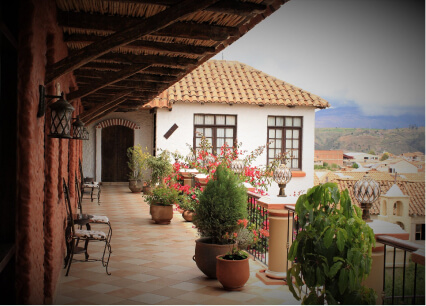
WHERE TO STAY3 / 3
Mi Pueblo Samary This low-rise colonial mansion hotel is an easy six-minute walk from the local landmark, Sucre Cathedral. Dark wooden floorboards, ochre walls, and textural local artwork make for romantically atmospheric rooms – but throw open the curtains, and you’ll find private balconies overlooking the prettily planted courtyard. If the in-house continental breakfast doesn’t do it for you, sample authentic Bolivian fare at nearby Los Tejados Restaurant, which serves clay oven-baked bread each morning.
How To Experience Peruvian Artwork and Craftsmanship on Your Next Tour To Peru
Peru’s rich heritage is brought to life through its vibrant handicrafts. From colorful textiles to intricate...
Read PostPeru’s Northern Beaches Travel Guide: Your Adventure-Filled Getaway
Bask in the northern BEACHERGOER’S PARADISE, With its dependable year-round sunshine, pristine coastline, s...
Read PostSchools Out For Summer: Where To Plan Your Next Family Vacation in South America
Imagine a family vacation in South America where your family explores sun-drenched beaches in Colombia and Per...
Read Post

 Call
Call 











